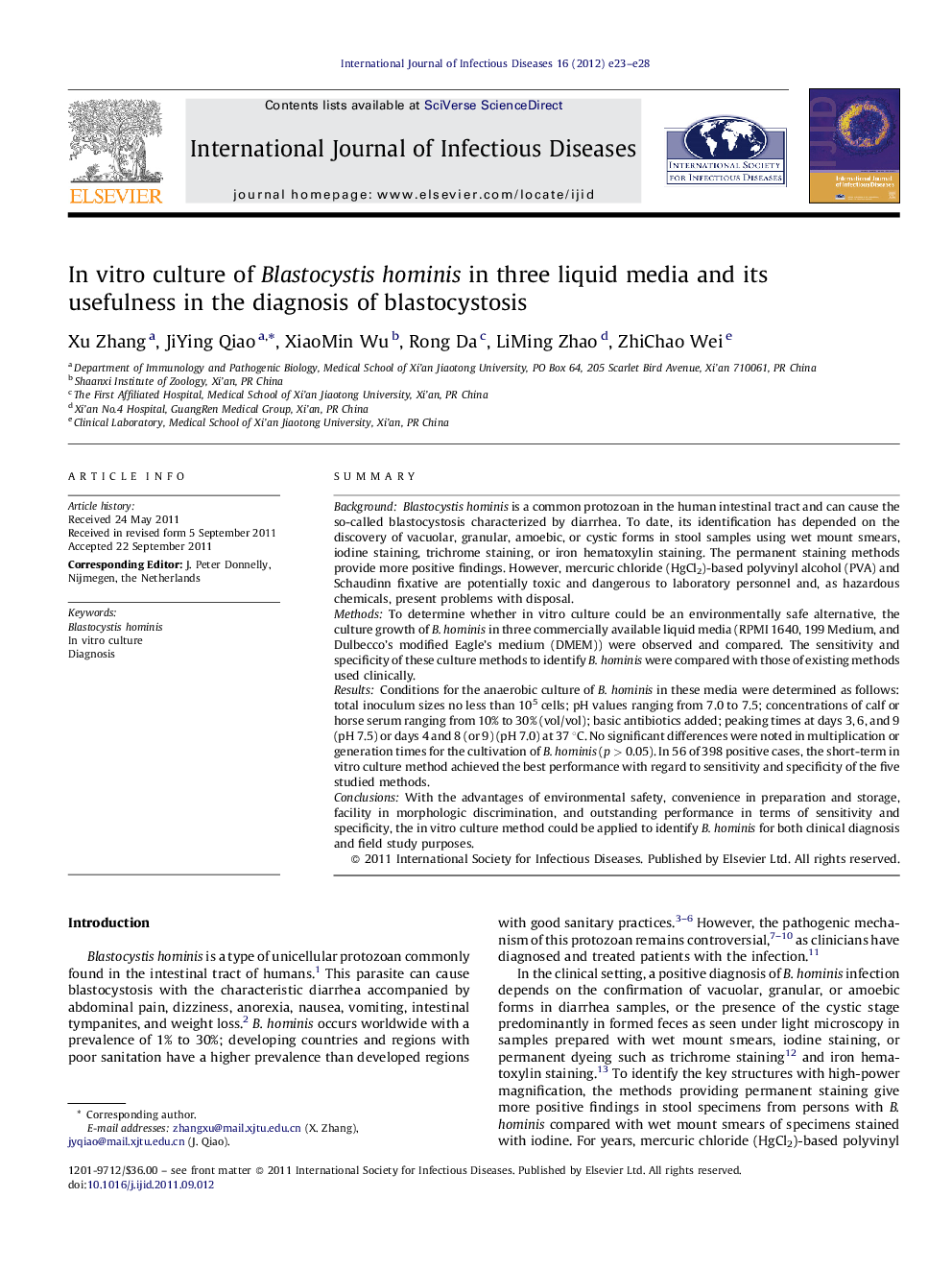| کد مقاله | کد نشریه | سال انتشار | مقاله انگلیسی | نسخه تمام متن |
|---|---|---|---|---|
| 3363295 | 1592102 | 2012 | 6 صفحه PDF | دانلود رایگان |

SummaryBackgroundBlastocystis hominis is a common protozoan in the human intestinal tract and can cause the so-called blastocystosis characterized by diarrhea. To date, its identification has depended on the discovery of vacuolar, granular, amoebic, or cystic forms in stool samples using wet mount smears, iodine staining, trichrome staining, or iron hematoxylin staining. The permanent staining methods provide more positive findings. However, mercuric chloride (HgCl2)-based polyvinyl alcohol (PVA) and Schaudinn fixative are potentially toxic and dangerous to laboratory personnel and, as hazardous chemicals, present problems with disposal.MethodsTo determine whether in vitro culture could be an environmentally safe alternative, the culture growth of B. hominis in three commercially available liquid media (RPMI 1640, 199 Medium, and Dulbecco's modified Eagle's medium (DMEM)) were observed and compared. The sensitivity and specificity of these culture methods to identify B. hominis were compared with those of existing methods used clinically.ResultsConditions for the anaerobic culture of B. hominis in these media were determined as follows: total inoculum sizes no less than 105 cells; pH values ranging from 7.0 to 7.5; concentrations of calf or horse serum ranging from 10% to 30% (vol/vol); basic antibiotics added; peaking times at days 3, 6, and 9 (pH 7.5) or days 4 and 8 (or 9) (pH 7.0) at 37 °C. No significant differences were noted in multiplication or generation times for the cultivation of B. hominis (p > 0.05). In 56 of 398 positive cases, the short-term in vitro culture method achieved the best performance with regard to sensitivity and specificity of the five studied methods.ConclusionsWith the advantages of environmental safety, convenience in preparation and storage, facility in morphologic discrimination, and outstanding performance in terms of sensitivity and specificity, the in vitro culture method could be applied to identify B. hominis for both clinical diagnosis and field study purposes.
Journal: International Journal of Infectious Diseases - Volume 16, Issue 1, January 2012, Pages e23–e28